IPS project
Indoor positioning System for Engineering Department of Ferdowsi University of Mashhad, Iran
Applications of Indoor Positioning
Modern outdoor positioning systems, such as the Global Positioning System (GPS), offer high accuracy for navigation in open spaces but face challenges when used indoors due to weakened satellite signals inside buildings. To overcome this limitation, a variety of indoor positioning systems (IPS) have emerged. IPS is extensively applied in environments like schools, offices, supermarkets, hospitals, and universities. For instance, in supermarkets, shoppers can use digital guide screens on carts equipped with RFID tags to easily locate products. In museums, visitors can access exhibit information using Bluetooth and Wi-Fi devices. IPS also aids students in navigating specific shelves in libraries and is utilized in targeted marketing, such as sending personalized advertisements to individuals based on their location within a building.
Problem Statement and Research Motivation
Visitors to large complexes like hospitals, offices, stores, and universities often face difficulties in finding optimal routes to their destinations, leading to wasted time and energy. To address this issue, the research focuses on developing a ubiquitous and cost-effective indoor positioning system that leverages existing infrastructure. The goal is to design an IPS prototype for mobile phones, tested at the Faculty of Engineering at Ferdowsi University of Mashhad. This system will utilize the building’s Wi-Fi access points for positioning, eliminating the need for additional infrastructure or high-cost solutions.
System Overview
This production presents contributions in two key areas: software development and machine learning. First, the floor plan of the Faculty of Engineering was converted from AutoCAD to GeoJSON, an open-source format compatible with applications. An Android app was developed using Flutter to capture Wi-Fi signals and display the predicted location on a map. The data collected is stored on a server, where machine learning operations are also carried out.
The machine learning component employs the fingerprinting method for positioning. During the offline phase, the data is cleaned, preprocessed, and stored in a database. To improve positioning accuracy, Gaussian Process Regression was used to enrich the offline data by considering the effect of the number of reference points. In the online phase, a buffering mechanism was introduced to provide smoother, more reliable location predictions. The final location is determined using the weighted k-nearest neighbors (k-NN) algorithm, and various distance metrics were analyzed for their impact on prediction accuracy.
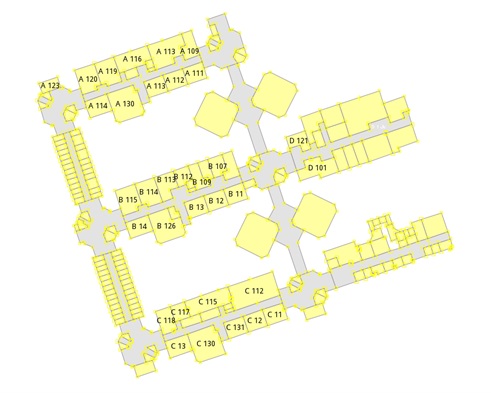
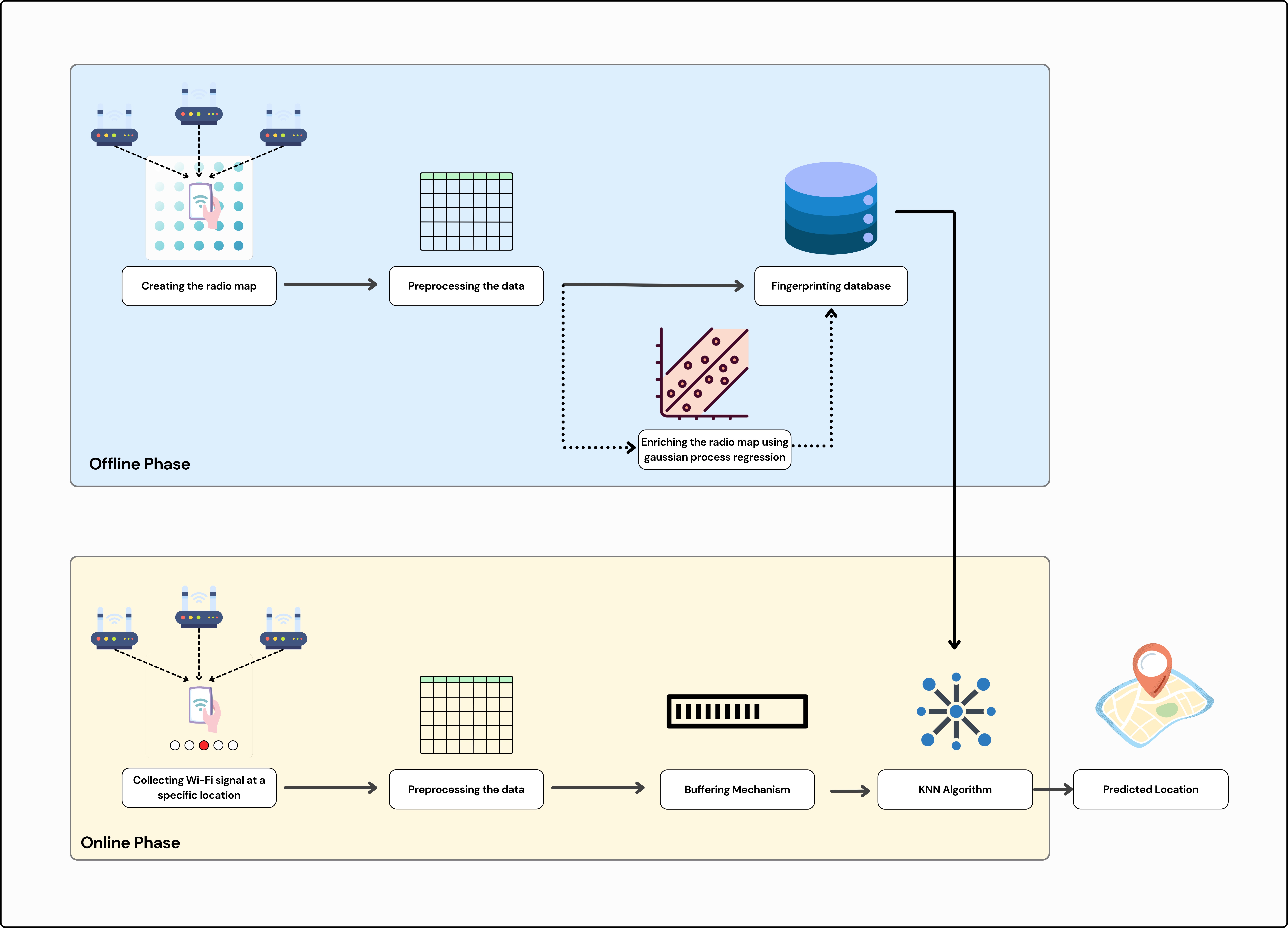
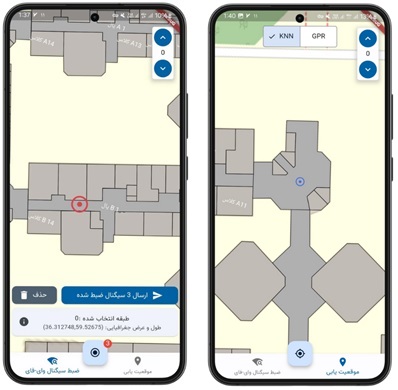
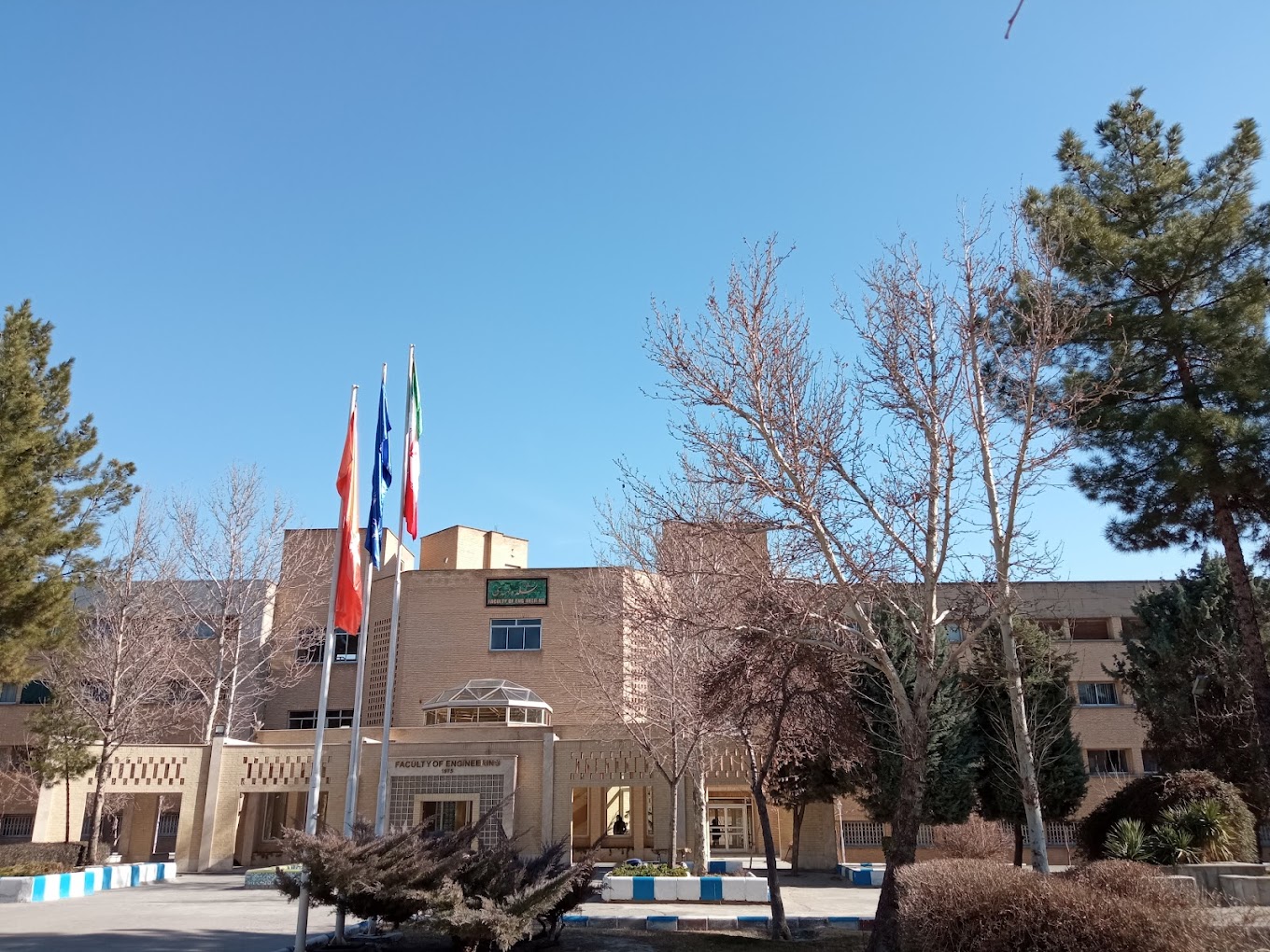
Locations of Wi-Fi access points installed as part of the Indoor Positioning System (IPS). These access points are strategically placed to ensure optimal signal coverage and accurate positioning throughout the building. Their placement is crucial for minimizing dead zones and improving the overall precision of the system.
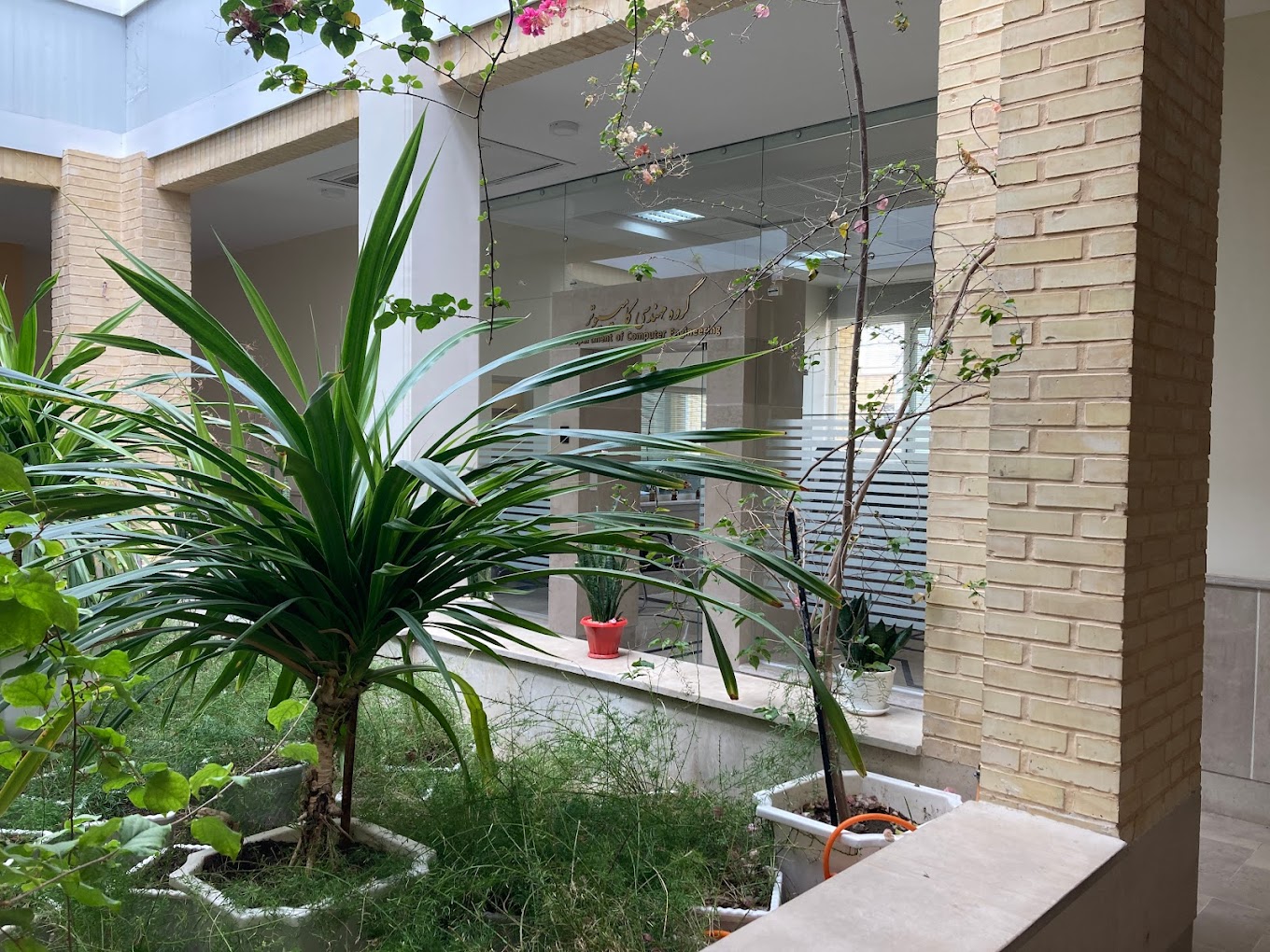

The Proposed Method
Software Contributions
Indoor Mapping
Indoor positioning using fingerprinting relies on supervised learning, which requires labeled data to train the model. Many studies emphasize the modeling process, often overlooking the critical role of labeling in ensuring the system’s comprehensiveness and usability. Traditionally, the positioning task is treated as a classification problem, with predefined reference points where signals are collected. While this method works well in controlled settings, it is not feasible in more dynamic environments like a university campus. To address these challenges, a mobile-compatible map format was necessary.
The original map, available in AutoCAD format, was unsuitable for mobile applications due to its proprietary nature. After considering several alternatives, GeoJSON was selected due to its open-standard and broad compatibility with modern software platforms. Consequently, the indoor map of all floors and corridors of the Faculty of Engineering at Ferdowsi University of Mashhad was converted into GeoJSON format. This approach allowed for the precise identification of all points on the map, across multiple floors, using geographical coordinates (latitude and longitude), making them ideal as labels for the learning model.
Faculty of Engineering Indoor Map
Mobile Application and Server-Side Code
An Android application was developed using the Flutter framework to facilitate positioning. The app’s main feature is an interactive indoor map, allowing users to navigate easily through touch gestures—zooming, panning, and rotating the map. Additional features like switching between floors and displaying room names and hallways further enhance the user experience, enabling users to locate their desired destination.
The app serves two key functions:
- Recording Wi-Fi signals for training data and transmitting this data to the server.
- Capturing Wi-Fi signals during testing, sending them to the server, and displaying the predicted location on the map, as determined by the learning model.
Mobile App
Once the signals are captured, users can send the recorded data to the server. This data includes the timestamp, device model, latitude and longitude of the signal capture, floor number, and a list of detected Wi-Fi signals. For each Wi-Fi access point, the list records the SSID, BSSID, and received signal strength in dBm (decibel-milliwatts).
Communication between the mobile app and server is facilitated through a Flask API, and upon receipt, the data is stored in a SQLite database.
\[dBm = 10 \times \log_{10}\left(\frac{P}{1 mW}\right)\]